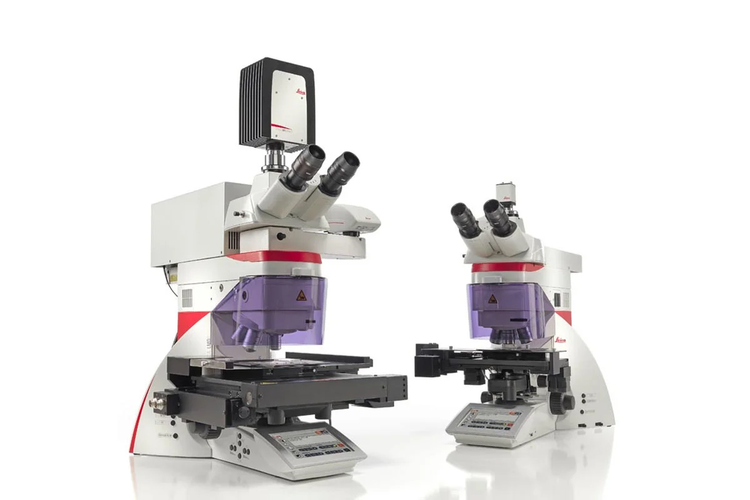Translational research aims to convert basic scientific discoveries into practical applications that can improve human health. It involves the integration of multiple disciplines, including basic science, clinical research and public health, to address complex health issues and develop innovative solutions.
At its core, it involves a multi-step process, starting with identifying a scientific discovery with potential clinical significance. This discovery is then developed into a potential therapeutic tool through preclinical studies which assess its safety, efficacy and feasibility. If a drug successfully meets these criteria it advances to clinical trials where safety, efficacy and dosing are tested in human subjects. Finally, if found to be safe and effective in clinical trials, it can be translated into clinical practice, where it can be used to improve patient outcomes.
Translational research has become increasingly important in recent years as the pace of scientific discovery has accelerated, and the need for new, effective treatments for a wide range of diseases has grown. One of the challenges of translational research is the complex nature of the process, which involves numerous stakeholders and requires significant resources and expertise. Collaboration between researchers, clinicians, industry partners and funding agencies is critical to successfully translate findings from the lab into clinical practice.
Key Differences Between Basic, Translational and Clinical Research
Basic, translational and clinical research are interconnected and built upon each other in a continuum that drives scientific progress and the advancement of medical knowledge. Each type of research plays a crucial role in the discovery and application of scientific findings. Here's how they are interconnected:
Basic research serves as the foundation for translational and clinical research. It focuses on exploring fundamental scientific principles and mechanisms that underlie biological, chemical, or physical processes. Basic research generates new knowledge and identifies potential targets for intervention or areas of further investigation. The discoveries made in basic research provide the building blocks and understanding necessary for translational and clinical research to take place.
Translational research takes the findings from basic research and applies them to real-world problems. It involves the translation of scientific discoveries into practical applications, such as developing new therapies or preventive measures. Translational research often requires interdisciplinary collaboration between scientists, clinicians and industry partners. It bridges the gap between basic science discoveries and their implementation in clinical settings, ensuring that the knowledge gained from basic research is effectively translated into tangible benefits for patients and healthcare.
Clinical research focuses on studying human subjects to evaluate the safety, efficacy and impact of medical interventions. It relies on the knowledge derived from basic and translational research to design and conduct studies that improve patient care. Clinical research includes various types of studies, such as observational studies, clinical trials, epidemiological studies and outcomes research. The findings from clinical research help validate the effectiveness of interventions discovered in basic and translational research, as well as provide insights into real-world effectiveness and patient outcomes.
The collaboration between basic, translational and clinical research is iterative. As clinical research provides feedback and generates new data, it informs and guides the subsequent stages of basic and translational research. Clinical observations and patient outcomes may lead to the formulation of new hypotheses in basic research or prompt the development of novel interventions in translational research.
Moreover, translational research bridges the gap between basic research and clinical application by addressing the challenges of translating scientific findings into practical solutions. It identifies barriers and limitations that may arise during the translation process, such as safety concerns, feasibility issues, or scalability challenges. By addressing these barriers, translational research helps refine and optimize interventions before they reach the clinical setting.
Overall, the interconnectedness of basic, translational and clinical research is essential for advancing medical knowledge and improving patient care. Basic research provides the foundation of understanding, translational research bridges the gap between discovery and application, and clinical research validates and refines interventions in real-world settings. This iterative process of knowledge generation and application ensures that scientific discoveries are effectively translated into tangible benefits for patients and society as a whole.

See how Danaher Life Sciences can help
Translational Research

Featured Product

Leica LMD6 Laser Microdissection Microscopes
Dissection Perfection
Laser Microdissection (LMD, also known as Laser Capture Microdissection or LCM) enables users to isolate specific single cells or entire areas of tissue. Powered by a unique laser design and dynamic software, Leica LMD systems allow users to easily isolate Regions of Interest (ROI) from entire areas of tissue down to single cells or even subcellular structures such as chromosomes.
LMD is typically used in genomics (DNA), transcriptomics (mRNA, miRNA), proteomics, metabolomics, and even next generation sequencing (NGS). Researchers in neurology, cancer research, plant analysis, forensics or climate research rely on this method. Furthermore, LMD is a perfect tool for live cell culture (LCC), for cloning and re-cultivation, manipulation or downstream analysis.
We move the laser, not the sample. And we use gravity for collection. That is why our LMD systems provide you with perfectly cut, contamination-free, analysis-ready dissectates.
Translational Research: Techniques and Approaches
The techniques used in translational research are diverse and multidisciplinary and involve a wide range of scientific and technical expertise. By combining these techniques and approaches, translational researchers can develop a deep understanding of disease mechanisms and develop new and effective treatments and interventions that can improve patient outcomes.
Some of the key techniques used in translational research include:
- Molecular Biology: Molecular biology techniques, such as DNA sequencing, polymerase chain reaction (PCR), and gene expression analysis, are used to study the molecular mechanisms underlying disease and to identify potential targets for therapeutic intervention.
- Imaging: Imaging techniques, such as magnetic resonance imaging (MRI), computed tomography (CT), and positron emission tomography (PET), are used to visualize and study the structure and function of tissues and organs and to monitor the progress of disease and treatment.
- Proteomics and Metabolomics: Proteomics and metabolomics techniques are used to study the complex networks of proteins and metabolites underlying healthy or disease states and to identify biomarkers for diagnosing and monitoring various conditions.
- Bioinformatics: Bioinformatics is an interdisciplinary field that combines computer science, statistics and biology to analyze and interpret large-scale biological data. Bioinformatics techniques are used to identify patterns and trends in biological data and develop predictive models for disease diagnosis and treatment.
- Clinical Trials: Clinical trials are the final stage of the translational to clinical pipeline and involve testing potential therapeutic interventions in human subjects. Clinical trials use various techniques, including patient recruitment and selection, randomization, blinding and statistical analysis, to ensure the intervention is safe and effective.
Translational Research: Future Trends
Translational research constantly pushes boundaries of what is possible as it pursues the breakthroughs that have the potential to transform healthcare.
Some of the key future trends and applications in translational research include:
- Precision Medicine: Precision medicine involves tailoring medical treatment to the individual characteristics of each patient, including their genetics, environment and lifestyle. Translational research is playing a critical role in advancing precision medicine by developing new tools and techniques for personalized diagnosis and treatment.
- Artificial Intelligence and Machine Learning: Artificial intelligence and machine learning are increasingly being used in translational research to help analyze large amounts of data and identify patterns and trends that can inform medical decision-making. These technologies are also being used to develop predictive models that can help identify patients at high risk of disease and optimize treatment plans for individual patients.
- Digital Health: Digital health involves using technology to monitor and manage health, including mobile apps, wearable devices and telemedicine. Translational research is helping advance digital health by developing new tools and technologies for remote patient monitoring, data analysis and personalized healthcare.